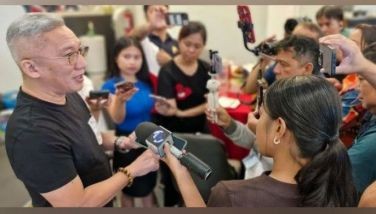Few HS students enrolled in 2-year curriculum program
June 17, 2006 | 12:00am
It appears that students are avoiding the two-year high school curriculum program introduced by the city government and the Department of Education.
This was disclosed yesterday by city consultant on education Joy Augustus Young, who said that only a few students were enrolled in the program, which is being introduced in seven pilot schools.
The seven pilot schools are the Talamban National High School, Pardo National High School, Gothong National High School, Florencio Urot National High School, Don Sergio Osmeña Memorial National High School and the Camp Lapu-Lapu National High School. The program is aimed at combating the reported high dropout rate in the present four-year curriculum following observations that many students drop out of school in their second year due to poverty.
Young said that with 150 students, the Florencio Urot National High School has the highest enrollees of the two-year curriculum program with other schools reportedly have only 15 students. Each pilot school has been allocated with four classrooms but only two to three rooms will be used.
But Young said he had expected the low outcome of the enrollees since the program is only on its trial stage. "Despite the low turnout of the enrollees, still we will pursue the program."
Young said the two-year curriculum is a practical approach for students who do not intend to pursue college since a certificate will be given to those who would finish the program.
The program, according to Young, is also aimed to decongest the huge high school population enrolled in day classes.
About 30 percent of students enrolled in day classes at the seven participating high schools are expected to enroll in the new curriculum. This is equivalent to approximately 2,000 students or 200 students per school.
The city allocated P5 million for the salaries of new teachers who will be employed for the two-year curriculum.
Young said that unlike the regular four-year curriculum, the two-year curriculum will adopt the "applied' manner of teaching basics subjects such as English, math, and science.
Students who finish the two-year curriculum and intend to pursue college will have to enroll in a distance-learning program before they can finally avail of a high school diploma.
Because slots are limited, the program will be offered on first-come, first-served basis only. The number in this year's enrollees was expected to increase from two to three percent.
Last year, enrollees in the elementary reached 91,000 while those in high schools reached 56,000. There are 68 elementary public schools in the city, which has 28 daytime and 26 night time high schools.
Oliva said in order to provide a quality education, decongestion of students in the daytime high school is needed. Only the top 300 to 400 students would be accommodated in daytime classes this year and the rest will be enrolled in night classes so classroom shortages will not be a major problem, he added. - Garry B. Lao
This was disclosed yesterday by city consultant on education Joy Augustus Young, who said that only a few students were enrolled in the program, which is being introduced in seven pilot schools.
The seven pilot schools are the Talamban National High School, Pardo National High School, Gothong National High School, Florencio Urot National High School, Don Sergio Osmeña Memorial National High School and the Camp Lapu-Lapu National High School. The program is aimed at combating the reported high dropout rate in the present four-year curriculum following observations that many students drop out of school in their second year due to poverty.
Young said that with 150 students, the Florencio Urot National High School has the highest enrollees of the two-year curriculum program with other schools reportedly have only 15 students. Each pilot school has been allocated with four classrooms but only two to three rooms will be used.
But Young said he had expected the low outcome of the enrollees since the program is only on its trial stage. "Despite the low turnout of the enrollees, still we will pursue the program."
Young said the two-year curriculum is a practical approach for students who do not intend to pursue college since a certificate will be given to those who would finish the program.
The program, according to Young, is also aimed to decongest the huge high school population enrolled in day classes.
About 30 percent of students enrolled in day classes at the seven participating high schools are expected to enroll in the new curriculum. This is equivalent to approximately 2,000 students or 200 students per school.
The city allocated P5 million for the salaries of new teachers who will be employed for the two-year curriculum.
Young said that unlike the regular four-year curriculum, the two-year curriculum will adopt the "applied' manner of teaching basics subjects such as English, math, and science.
Students who finish the two-year curriculum and intend to pursue college will have to enroll in a distance-learning program before they can finally avail of a high school diploma.
Because slots are limited, the program will be offered on first-come, first-served basis only. The number in this year's enrollees was expected to increase from two to three percent.
Last year, enrollees in the elementary reached 91,000 while those in high schools reached 56,000. There are 68 elementary public schools in the city, which has 28 daytime and 26 night time high schools.
Oliva said in order to provide a quality education, decongestion of students in the daytime high school is needed. Only the top 300 to 400 students would be accommodated in daytime classes this year and the rest will be enrolled in night classes so classroom shortages will not be a major problem, he added. - Garry B. Lao
BrandSpace Articles
<
>
- Latest
- Trending
Trending
Latest




















